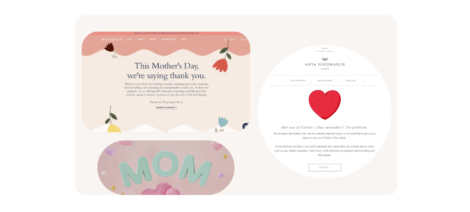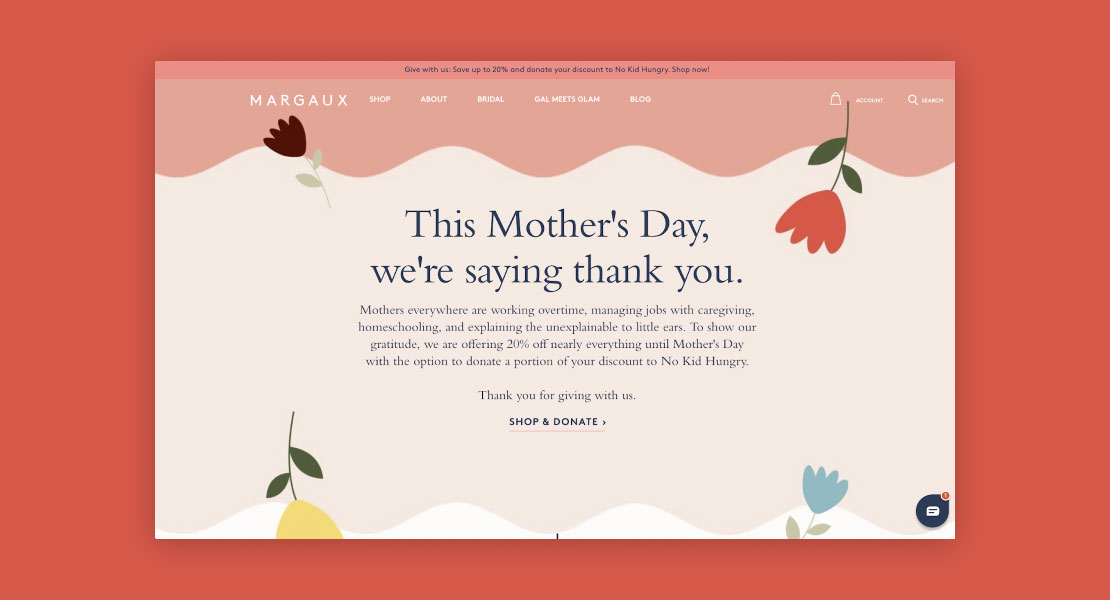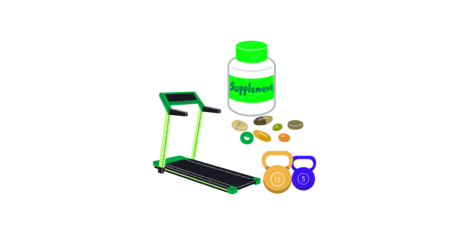E-commerce is constantly changing, and the past year gave marketers a lot to deal with. 2023 is here, and like every new year, it brings some baggage with it. From record inflation levels, changes to consumer spending, supply chain issues, and even disruptive tech (we see you Chat GPT)–2022 was a true melting pot of pre-pandemic shopping (brick-and-mortar) with the new immersive online shopping world that consumers have come to expect.
The buzzwords of 2023 will be retention and efficiency—both speak to the larger economic climate and how businesses can focus on doing more with less and dialing in their core audience’s experience for maximum results. Brands will narrow their focus to building on existing successes for a lower lift and safer bet to growth. That can mean anything from A/B testing existing email/SMS automations to find incremental lifts in conversion and scaling proven influencer and affiliate programs to focusing on data collection/personalization and beyond. Optimizing winning channels now will give these brands more of a cushion to run small-scale experiments later on in the year to explore new channels, retail placements, or even partners!
But don’t just take it from us; we asked our partners to weigh in on the top e-commerce trends they’re predicting and how to make 2023 the year of being prepared! Check out their amazing answers:
1. What Are The Defining E-Commerce Trends You Think We’ll See In 2023?
Alloy Automation
In 2023, we will see a push for more connected tech stacks.
Did you know there are over 6,000 apps in the Shopify App Store? Not to mention the thousands of others across other platforms like BigCommece, Magento, WooCommerce, and Wix.
From your platform to your marketing tools, your payments tools, and beyond, there’s a lot to consider when building your tech stack. To top it off, once you start using various apps, you can suddenly pile up thousands of data points that easily become siloed.
So why do the tools in your tech stack become siloed? For many brands, it’s due to a lack of direct integrations between one app to another.
Because of this, it’s difficult to automate processes and personalize customer communication—not to mention the time it takes to comb through your data in 10+ different apps.
At one point in the past few years, the SaaS companies that power your e-commerce tech stack deprioritized integrations. It was difficult for these startup companies to balance building integrations while improving their product.
Eventually, they prioritized core product features and put integrations on hold to increase market share and reach more customers. Because of this, we see more siloed tools than ever.
But here’s the real kicker: brands need integrations. As more siloed tools enter the market, brands are left with disconnected tech stacks—and lots of manual work.
For the SaaS companies that aren’t offering integrations, this is a recipe for churn. For the brands relying on these tools to operate their business, it adds time to your plate doing repetitive, time-consuming tasks.
This year is the time for connectedness, and integrations are the best solution to make that happen. Connect your tech stack, automate the processes that you can, and give yourself more time in the day to focus on growing your business through creative marketing and memorable customer experiences.
EcoCart
One of the trends that have been forming over the past few years but will really take shape in 2023 is that brands will bring transparency to the forefront of their customer experience.
As consumer demand for sustainability within the e-commerce industry continues to grow, their expectations around how accessible information about the ecological footprint of brands’ operations will increase, too. This means shoppers will expect brands to not only be taking climate action, as many already do, but they’ll want to know the exact details around how that climate action is actually impacting the world as well as have transparency around the ecological footprint that’s being counteracted in the first place.
Brands will heed this call for transparency by, first and foremost, embarking on their sustainability journey if they haven’t yet. For smaller brands, who can’t risk making big changes during difficult economic times, this will mean finding solutions to offset their ecological footprint at little or no cost to them, such as giving shoppers the opportunity to remove plastic from the oceans or to fund carbon offsetting projects at checkout. For larger companies, this will mean optimizing their supply chain to minimize emissions and waste and offsetting what’s left. The second part of this trend will entail brands, both big and small, using website real estate to discuss both their existing footprint and what they’re doing to offset it. This will take shape as touch points such as product detail page content explaining where and how the product was made, impact pages discussing the brand’s overall impact, carbon neutral orders, and more.
A natural effect of brands becoming more transparent is that shoppers will grow to trust them more. Brands that lead this trend will find that their building deeper relationships with consumers, and that will foster more loyalty.
Fuel Made
Sharing my perspective as an email expert, there are a few trends I expect to see in 2023.
First, AI is getting more intelligent, and writers will adopt these tools to help them work more efficiently. No, the bots aren’t going to take over writers’ jobs, but they can give you a start when you’re experiencing writer’s block or need some inspiration. This can be helpful for email marketers who are writing tons of copy every week.
But at the end of the day, AI can’t master a brand’s unique style and tone of voice—and it can’t incorporate your key messages because the technology doesn’t know your business as you do. So people will embrace the bots for efficiency purposes in the new year, which may help copywriters level up their work.
Another trend I’m paying attention to is interactive content embedded in emails, such as clickable videos and quizzes. I think these could be a big hit in 2023. As a newer concept, using interactive content is a great way to engage with your subscribers in an exciting way. Plus, you can learn a lot about your customers through their responses, which you can then use to segment them intelligently and send personalized content based on their interests.
Here’s an email example from one of our clients, Super7, where we wrote copy to connect with customers by talking to them as collectors instead of just shoppers. We also gamify the process with an engaging question that asks them to share their “collector style.”

LoyaltyLion
Recession-proofing with retention. In 2023 we’ll see more e-commerce businesses move away from acquisition and work harder to retain their existing customers during these economically trying times.
A quick scan of the current landscape shows that things aren’t too rosy – inflation is at a 40-year high, and with the cost of living crisis, consumers are really being forced to tighten up on their spending. Alongside this hurdle, we’re also faced with the fact that e-commerce has boomed over the past few years, meaning there are more Shopify stores than ever before, and the competition is the fiercest it’s ever been. This means it’s even harder to differentiate your offering and stand apart from your competitors.
But it isn’t all doom and gloom!
Taking a look at the luxury market proves that people will still save up over time to make purchases that they’re passionate about. The only difference now is that they’re going to be pickier. But by focusing on retention and using a loyalty program, you can ensure you’re the one they save up to spend with. You’ll also reduce your acquisition costs, drive organic growth and create genuine lasting relationships that will survive these uncertain times. Here are our top three tips for doing just that.
1. Build customer lifetime value (CLTV). Build CLTV by opting customers into your loyalty program as early as possible, engaging with them in between visits to speed up time to purchase, and re-engaging customers when they become ‘at risk’.
2. Acquisition through advocacy. Incentivize your customers to help you acquire new ones more cost-effectively by awarding loyalty points for reviews and referrals.
3. Driving differentiation. Allow customers to earn points via activities that do good, such as recycling packaging or redeeming points in the form of charitable donations.
Ready to recession-proof your brand? Learn more about the power of customer loyalty with LoyaltyLion.
Smartrr
With customer acquisition costs at an all-time high, brands will undoubtedly be pivoting to their retention strategies in the upcoming year. 2023 is going to be the year of LTV, meaning that weaving in more LTV touchpoints throughout the customer journey will be essential for strengthening your e-commerce business as a whole.
On average, over 40% of an e-commerce brand’s revenue is driven by repeat purchases. That is not something to be taken lightly. This past year, we’ve seen more and more brands tailor their subscription programs to the intended use of their products for the optimal customer experience. Jolie is a great example. Step one in your beauty routine, Jolie’s filtered shower head offers a ‘Sequential’ subscription model where they sell the shower head as an OTP, and then it automatically engages a filter subscription every 90 days. This strategically tailored subscription program has earned Jolie a less than 1% churn rate. This concept of going outside the norm of traditional ‘subscribe and forget’ models is a trend we foresee spilling over into the new year.
Additionally, to complement these tailored subscription programs, we’re seeing brands completely transforming their customer account portal into engagement hubs by implementing flexible subscription management options, subscription-led loyalty rewards programs, upsells, referrals, and social feeds, all directly built into the portal experience!
Adding flexibility and exclusivity to your customer’s post-purchase experience will be huge in 2023. By giving customers total autonomy over their subscription journey, brands are creating membership-like experiences to deepen their connection with loyal customers resulting in heightened brand affinity. As more consumers subscribe to the brand experience over individual products, brands can incentivize subscribers to refer a friend, gift one-time orders, or gift subscriptions by rewarding them with loyalty credits. With brands adding referrals and gifting abilities directly in the customer account portal, it’s easier than ever to build from your most loyal customer base and introduce a wider audience to your brand, and ultimately increase the lifetime value of all customers.
Tydo
Understanding consumer behavior will be the foundation of a strong 2023 retention strategy.
As we all know, inflation and an impending recession are threatening high-growth brands. In this upcoming year of uncertainty, merchants need to focus on retention, product performance, and customer loyalty to execute an airtight marketing strategy.
One of the best ways to understand customer behavior and plan out your retention strategy? Cohort analysis.
A cohort is a collection of customers grouped together based on specific criteria (typically the month they made their first purchase).
Cohorts help you answer key questions about your business. For example:
- Once a customer buys, do they continue to buy, or do they churn?
- Is there a cohort that’s buying more often? If so, why?
- Are there products or campaigns that outperform others? Should you double down on those?
- Is there a cohort that’s frequently dropping off? If so, why? How can you reduce churn?
- How can you refine your retention strategies to increase LTV?
Diving into cohorts is one way to see where you should focus your efforts—acquisition or retention. Look to see if the number of new customers (and sales) is increasing over time. If these numbers aren’t rising, it might be time to double down on acquisition efforts.
Using filters, cohort analysis can illuminate your best-performing products. Determine which products bring in the most customers, drive the most repurchases, and increase your average order value.
You might find that one product is most effective at getting people in the door (acquisition), and another is better at keeping your customers around (retention).
One question to ask yourself at the beginning of the year: Did your holiday sales bring in loyal customers? Cohort analysis can show you if these new customers are turning into repeat ones—and the best time for remarketing efforts.
Ready to get started using cohorts? Try Tydo’s modular data platform for free and dive into your store’s cohorts analysis. Stay tuned for new blocks in 2023, where you can double-click into your data and see a clearer picture of your retention marketing efforts.
2. What Should Small vs. Large Brands Be Focusing On Going Into The New Year?
Alloy Automation
For one, know that there’s no playbook for e-commerce anymore. In the past, it was easy to funnel money into paid advertising and see an ROI. This isn’t the case anymore—there’s no single blueprint for growth. Thankfully, there are many different ways to grow a business. You just need to focus on providing value to your target customers on the channels you enjoy creating content for the most. (If you prefer to write, start a blog, and focus on SEO. If you like being on video, get on TikTok.) Build an organic engine early and consistently.
Consider working with influencers and creators instead of paid advertising. This is a much better way to connect with your audience through people who would be classified as members of your audience themselves. Don’t use a spray-and-pray tactic regarding influencers—be strategic about choosing partners who represent your brand values.
Determine how to cut costs without impacting your product quality or customer experience. For example, change your packaging to a cheaper, more sustainable option. Or, implement an automation tool to take on your logistics and operations tasks so you waste less time on repetitive tasks.
Fuel Made
We’re clearly heading into a tough year for brands. My advice for smaller brands is to focus on low-cost-high-ROI channels like email. This channel will be your most valuable asset for connecting with your customers on a consistent basis and seeing a profitable return. Don’t hold off—get started with email now, create a campaign calendar, and test different campaigns and messages to see what resonates with your audience.
Also, focus on list growth throughout the year. The 2023 holiday season may be far off, but you’ll need an engaged audience by the time it comes. Test different offers and pop-ups across your site, and craft engaging welcome flows that warm those customers up to the idea of your brand and what you stand for.
Again, this is a high-ROI channel, but you have to put effort into it all year long.
3. What Are Some Customer Loyalty/LTV Strategies For Brands to Use As We Kick Off 2023?
Alloy Automation
Focus on building true connections with your customers—not just the transactional relationship you have with them. As we head into a recession, people will be more cautious about where they spend their money. Building deeper connections now is important so customers feel comfortable supporting your mission and values. You can do this by creating content as the face of your brand (i.e., create a personal TikTok account and share updates about your product there versus a brand account), using owned channels like email to share your company story, and creating customer shopping experiences that are so helpful and memorable that shoppers talk about your willingly with their friends and family (look up how the pet brand Chewy does this).
Integrate your tech stack! Using an automation tool, you can build creative workflows that improve your marketing and customer experiences. For example, you could level up your subscription and loyalty program by connecting them and rewarding customers for their retention. If customers pay for a three-month subscription, they could earn 500 loyalty points. If they pay for a six-month subscription, they could earn 1,000. Automation makes it easy to keep your tools connected and helps you create fun shopping experiences that you don’t have to spend extra time managing.
Fuel Made
Focus on 2-3 channels that you can do really well. It’s easy to spread yourself too thin by trying to be everywhere and following society’s trends. But just because everyone else is on TikTok doesn’t mean it’s the right channel for you. Figure out where your audience is hanging out and which channels you have the bandwidth to create high-quality content for.
Keep a healthy, clean email list to improve your deliverability, especially since email may be one of your only reliable channels in the new year.
2023 isn’t going to be the easiest year for businesses, but it’s not without its opportunities. E-commerce brands that focus on efficiency, optimization, and retention will the ones who emerge stronger than ever with a dedicated customer base and the ability to stand out from the crowd. Good luck this year!



